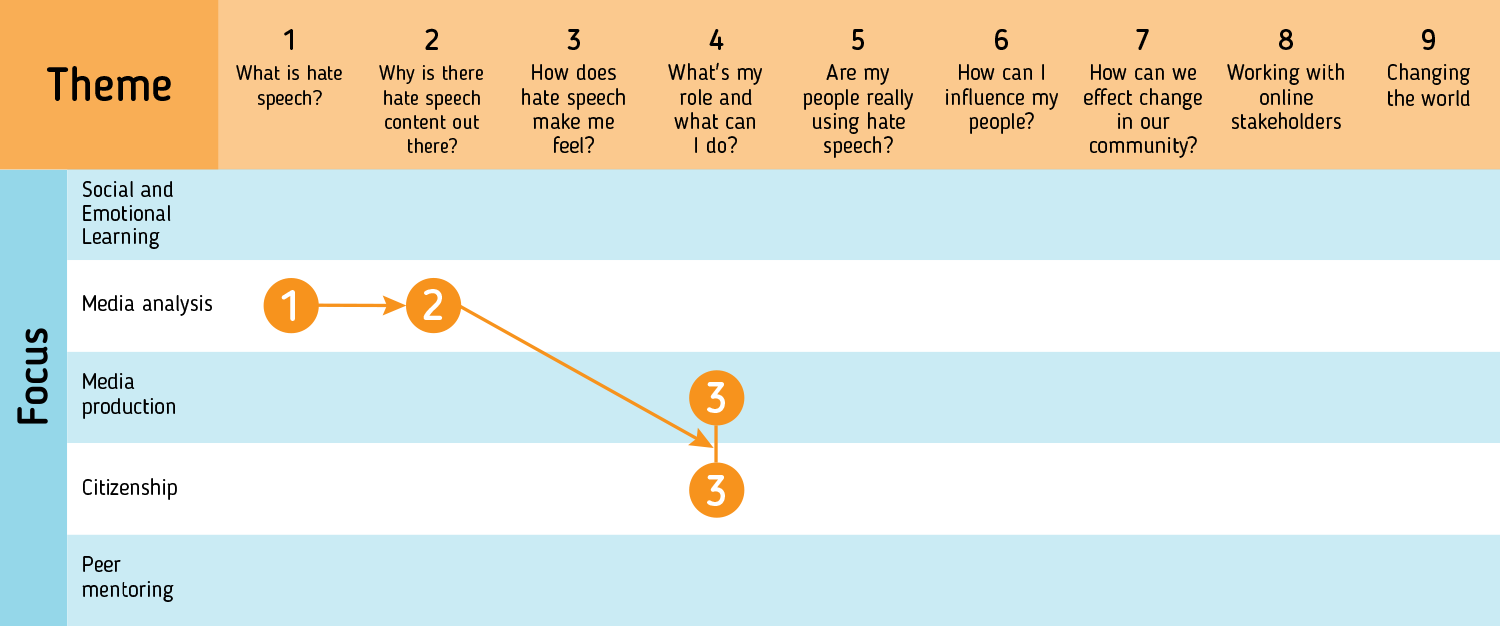Pathway 2: Introduction for Older Students
In this section, we suggest an introductory pathway for older students (14-16 year old) when putting SELMA into practice in your classroom or school. Please note that this is by no means restrictive; SELMA has been designed as an open and flexible framework which you can adapt to the needs, level and interests of the group(s) you work with. The SELMA journey articulated below has been developed for illustrative purposes, to give you a suggested ‘way in’ to the toolkit if you’re not sure where to start. However, we would certainly encourage you to explore the toolkit and use it creatively!

Step 1: Understanding and defining hate speech
In ‘Theme 1’, the ‘Media Analysis’ activity Xorg the Xenovian offers opportunities for students to explore positive and negative sentiment in online speech; consider whether certain statements might break the law or not and introduces the basic concepts around “protected characteristics”.
Whilst the green alien may seem somewhat childish for an older group at first sight, it is intended to present an abstract profile/stereotype that is not influenced by existing attitudes/bias/opinion that students may have.
This work can then form the basis of developing a working definition for students of what online hate speech means for them.
Step 2: Building on Protected Characteristics
The ‘Theme 2’ ‘Media Analysis’ activity Reading Between the Lines further reinforces the concept of protected characteristics and offers the opportunity to match those to examples of sensationalist media headlines. Teachers may use the guiding questions to shape and inform the resultant student conversations that develop from these exercises. Like many of these activities there will be a wide range of opinions but use these opportunities to begin to explore the difference between hate speech and freedom of speech.
Step 3: Building simple agency
Older students may feel they want to begin to influence change by effectively communicating what they have learned from steps 1 and 2. The Making Memes ‘Media Production’ activity and the and Meaningful Memes ‘Citizenship’ activity in ‘Theme 4’ both encourage student to develop, produce and communicate effective online hate disruptive messaging through social media channels.
The resource list in the Toolkit outlines a selection of online tools and guidance that support the creation of memes.
Step 4: Where Next?
In ‘Theme 5’, the Toolkit asks the question “Are my people really using hate speech?”. This turns the spotlight on the immediate social groups to which students might belong (online gaming groups; classmates; sports groups; social media groups) to examine behaviour that could be interpreted as hate speech and begin to explore ways to affect change within those groups.
